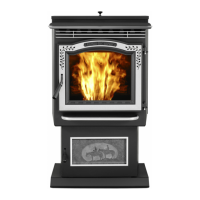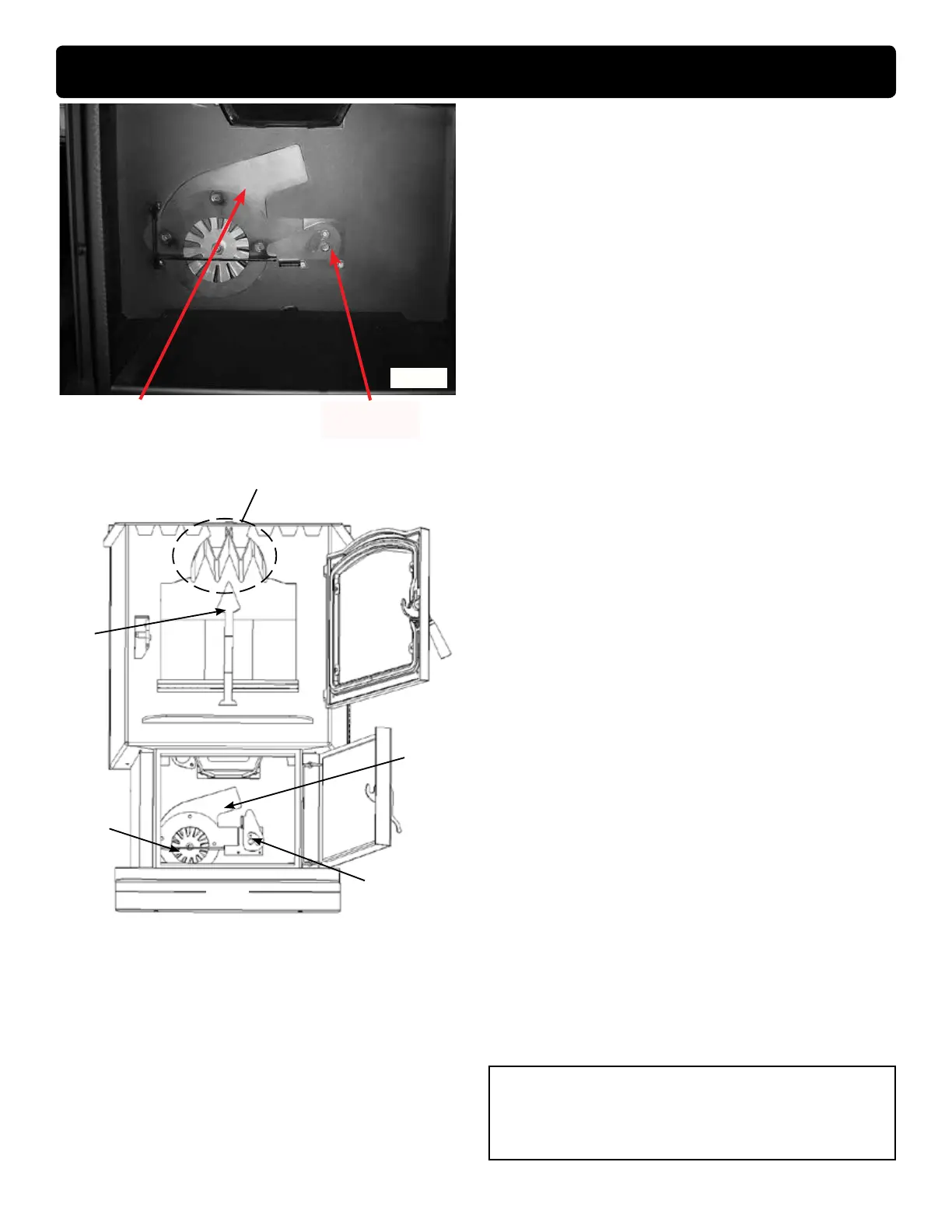23
P68 Pellet Stove
Whenever adding fuel to the hopper, take the time
and scrape the grate surface of the burnpot, using
the scraper tool provided. This can be done while a
re is burning. Wearing heat resistant gloves, open
the rebox door. Scrape any accumulated ashes
from in front of the re, into the ash pan. Now, scrape
under the re, in a downward direction, to loosen any
carbon deposits. Do not scrape the re out of the pot.
Whatever you loosen will be pushed out with the ow
of new fuel into the pot. (Fig.33)
After approximately 1 ton of
pellets has been burned, it will be necessary to empty
the ash pan.
It is recommended that the stove is cold and
shut down when removing ash pan.
1. Pull on latch handle and remove ash pan. Use ash
pan handle to carry and dispose of ashes.
2. Slide the ash pan back into the stove and latch the
door by pushing down on the latch handle.
The stove should be shut-down and thoroughly
cleaned after each ton of pellets consumed. The
cleaner the stove, the more efcient it will be.
Fuel with higher ash and moisture content will
require more frequent cleanings.
1. Shut down stove and to
insure that all motors are stopped.
2. Clean heat exchanger with scraper as shown in g
27.
3. Brush or scrape the inside of the stove to remove
y ash.
4. Scrape burnpot with at end of scraper provided
with the stove. Inspect the holes on the burnpot
surface. See Fig. 33.
Combustion
Blower Cover
Blower Cover
Latch
Fig 26
Whenever wood is burned, there is a potential for
creosote formation. The venting system should be
inspected periodically during the heating season to
determine if a creosote buildup has occurred. If a
signicant layer of creosote has accumulated (3 mm
or more), it should be removed to reduce the risk of a
chimney or venting system re.
Scraper
Blower Cover
Latch
Blower
Wheel
Flue
Outlet
Heat Exchanger Fins
Fig 27

